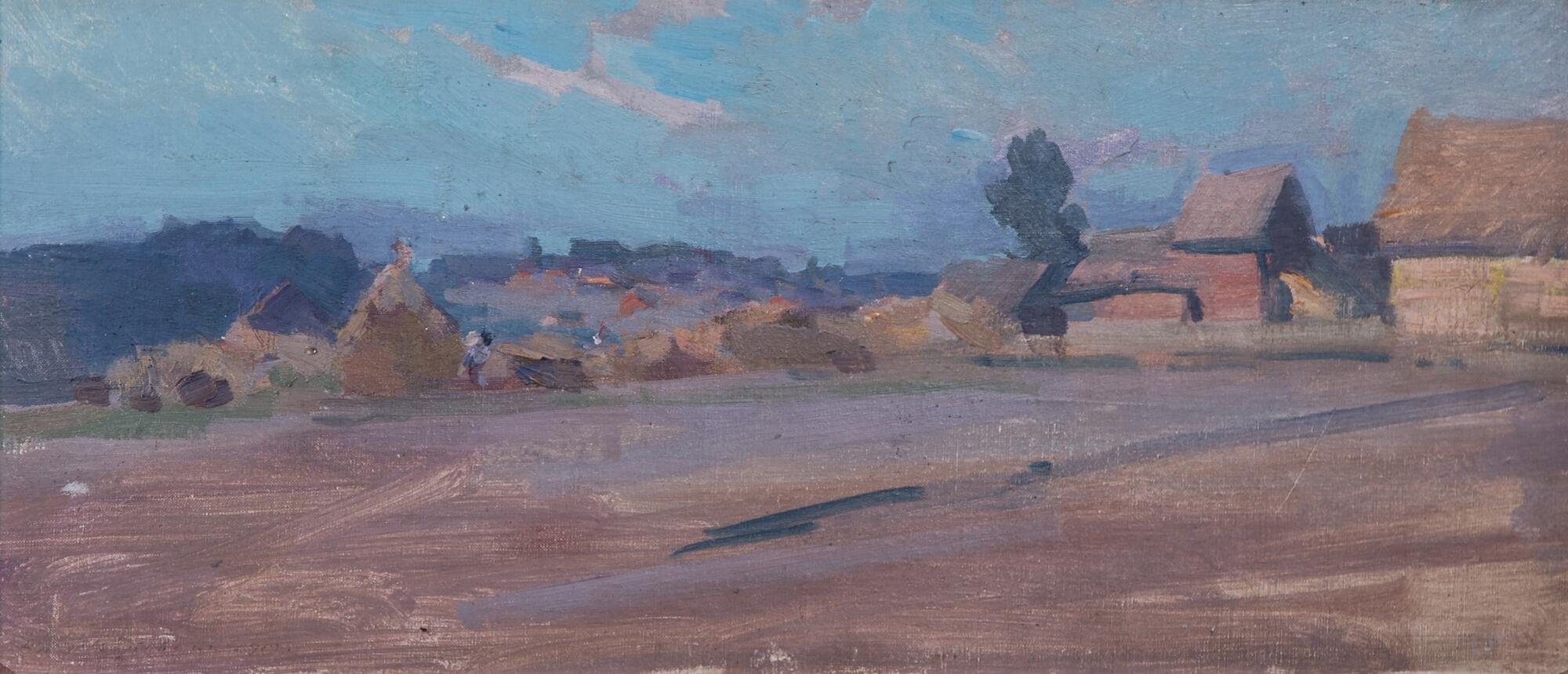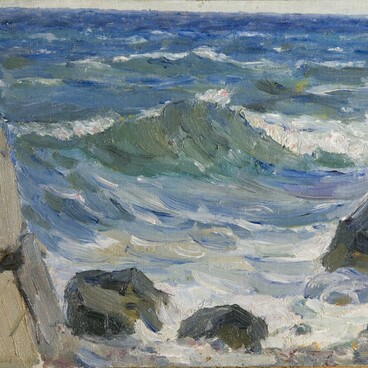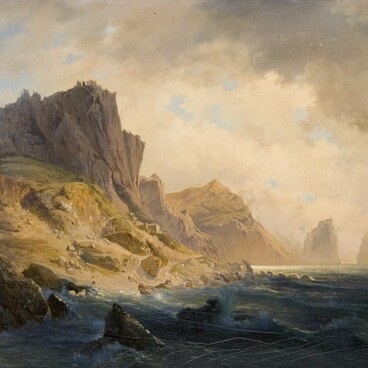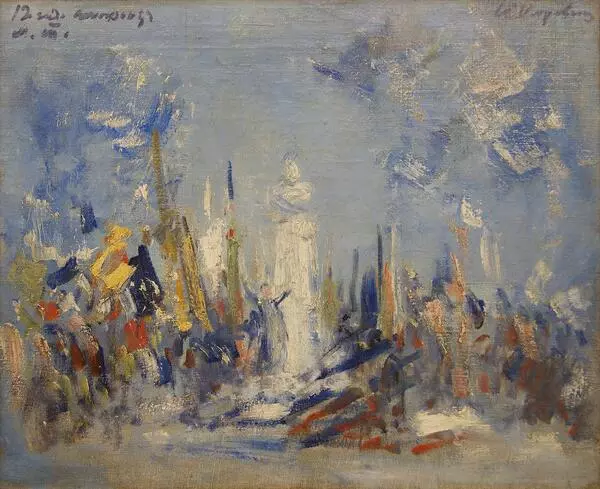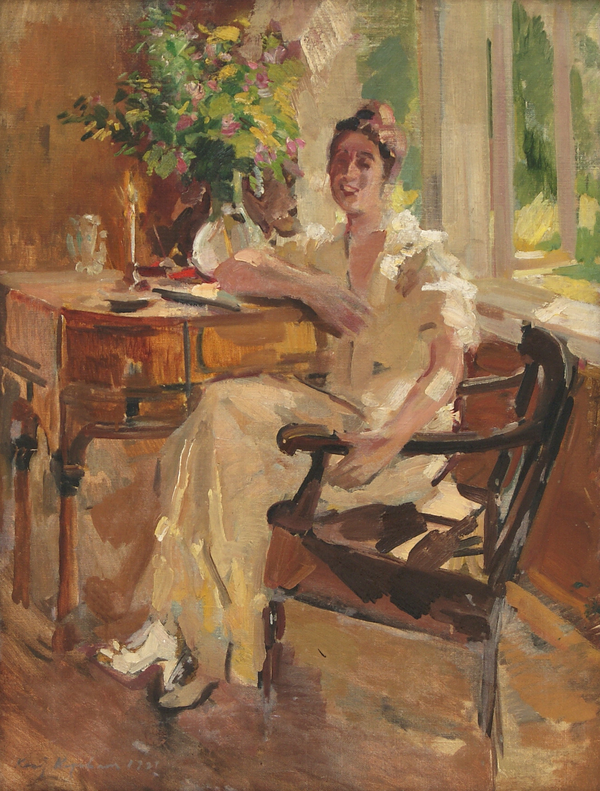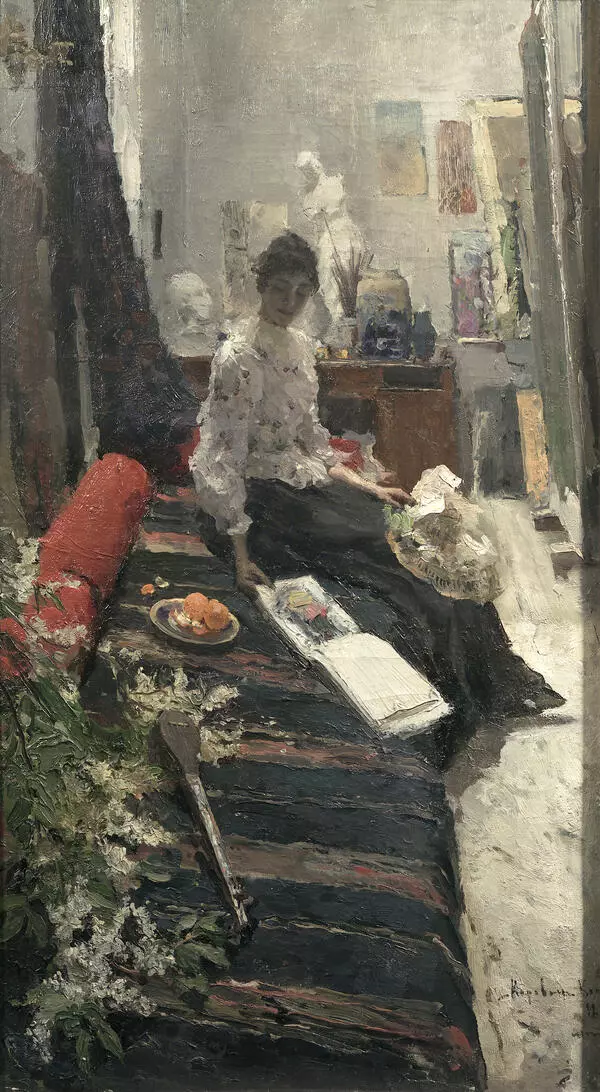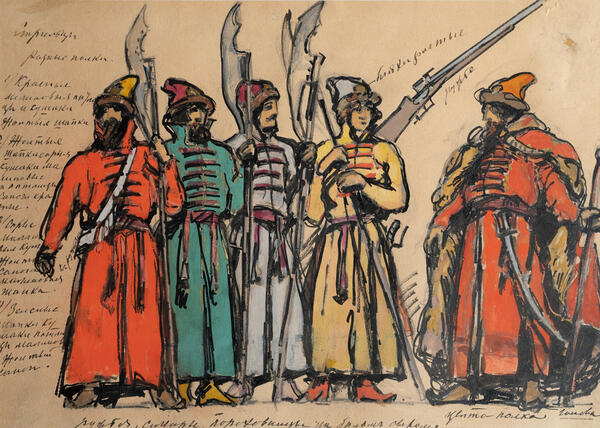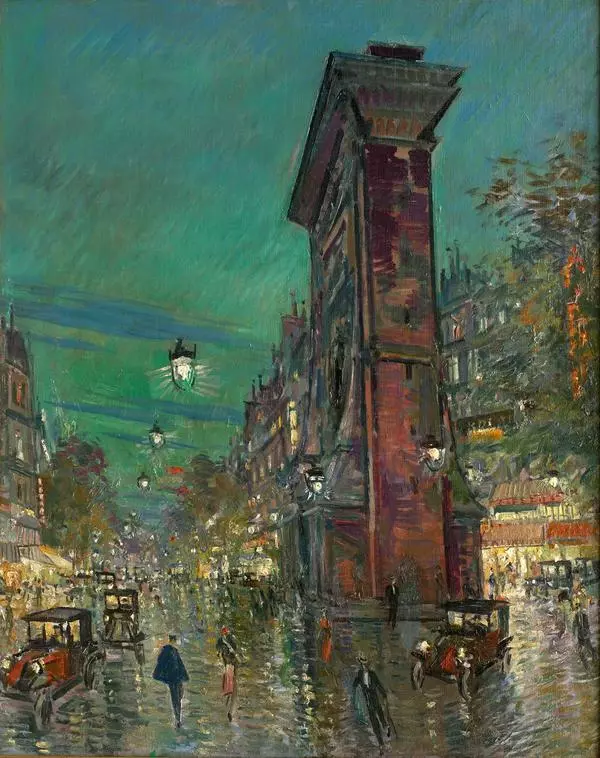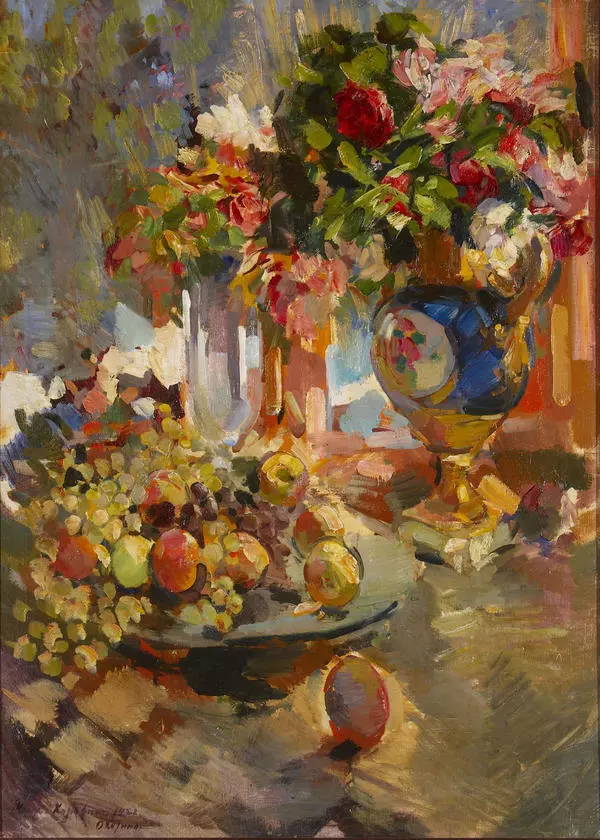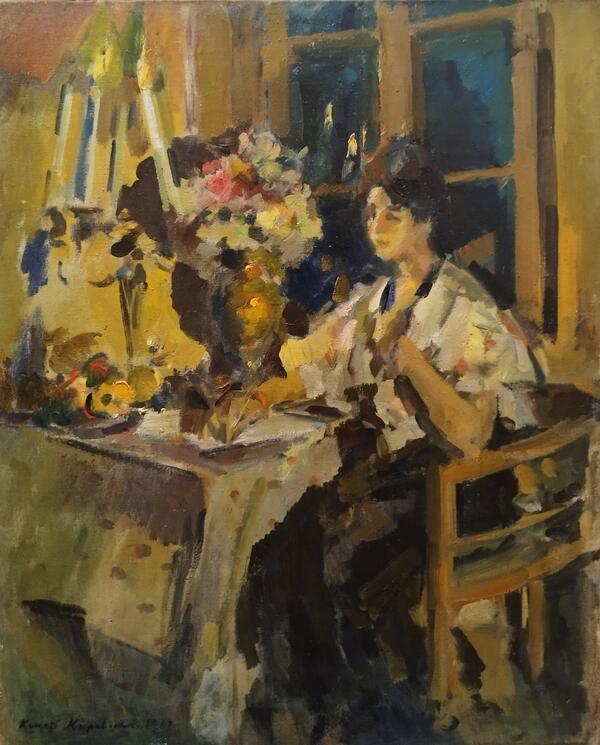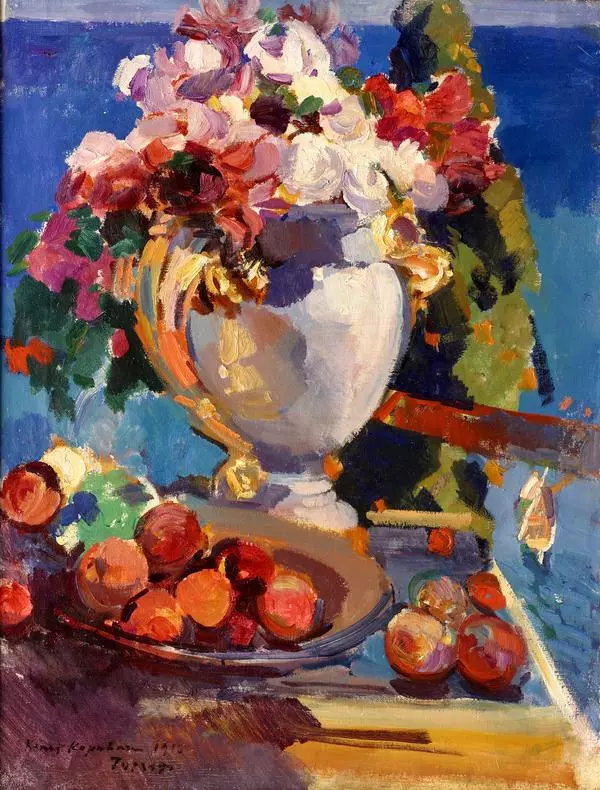In 1921 the sketch “Evening Landscape” (1912) by Konstantin Alekseevich Korovin (1861-1939) was handed over from the common museum fund of the country (Glavmuseum) organized after the revolution. The Russian painter Konstantin Korovin was born in Moscow in 1861. He graduated from the Moscow School of Painting, Sculpture and Architecture, studied with Alexei Savrasov, Vasily Polenov and Vasily Perov. Korovin’s name has gone down in the history of Russian art and belongs to his highest achievements: theater artist and chief art director, teacher and writer, academician of painting, friend of Valentin Serov and Fyodor Chaliapin, peer of Isaac Levitan, Mikhail Vrubel and Mikhail Nesterov. Korovin is a distinctive representative of the turn of the XIX–XX centuries with its characteristic intense search for the ideal, striving for synthesis, for the reformation of the language of painting.
Konstantin Korovin is usually called the “Russian Impressionist”. This is an artist with his own vision of the landscape. He thought in color spots, not in a whole picture. His works are characterized by broad strokes, colored shadows and the effect of light with color. Korovin proved himself to be an unsurpassed master of an expressive and energetic manner of painting. This technique required the artist to quickly conduct the work process and avoid any retouch. In oil and watercolor painting, Korovin did not do precise drawing, he strived for spontaneity and expressiveness of the sketch. He was a proponent of purely pictorial drawing — a brush sketch. His passion for working for the theater turns into dashing brushworks and freedom of picturesque manner in his painting. In the sketches from nature, the artist conveyed his direct impression by means of painting — color and his characteristic system of application of paints with expressive pictorial brushworks.
The small sketch “Evening Landscape” presented in the exhibition is compositionally divided into three horizontal parts. In the foreground, the ground is bare, without a single blade of grass, it occupies half of the landscape. The background depicts a village illuminated by the setting sun, it creats a feeling of silence and tranquility. In the distance, the outlines of trees, forests, and hilly terrain are visible. Above the landscape there is an evening gray-blue sky with light clouds dissappearing over the horizon. The simplicity of the landscape plot, the density of the brushstroke, the breadth and fluency of the painting make the painting mobile, it conveys the artist’s state.
Konstantin Korovin is usually called the “Russian Impressionist”. This is an artist with his own vision of the landscape. He thought in color spots, not in a whole picture. His works are characterized by broad strokes, colored shadows and the effect of light with color. Korovin proved himself to be an unsurpassed master of an expressive and energetic manner of painting. This technique required the artist to quickly conduct the work process and avoid any retouch. In oil and watercolor painting, Korovin did not do precise drawing, he strived for spontaneity and expressiveness of the sketch. He was a proponent of purely pictorial drawing — a brush sketch. His passion for working for the theater turns into dashing brushworks and freedom of picturesque manner in his painting. In the sketches from nature, the artist conveyed his direct impression by means of painting — color and his characteristic system of application of paints with expressive pictorial brushworks.
The small sketch “Evening Landscape” presented in the exhibition is compositionally divided into three horizontal parts. In the foreground, the ground is bare, without a single blade of grass, it occupies half of the landscape. The background depicts a village illuminated by the setting sun, it creats a feeling of silence and tranquility. In the distance, the outlines of trees, forests, and hilly terrain are visible. Above the landscape there is an evening gray-blue sky with light clouds dissappearing over the horizon. The simplicity of the landscape plot, the density of the brushstroke, the breadth and fluency of the painting make the painting mobile, it conveys the artist’s state.
